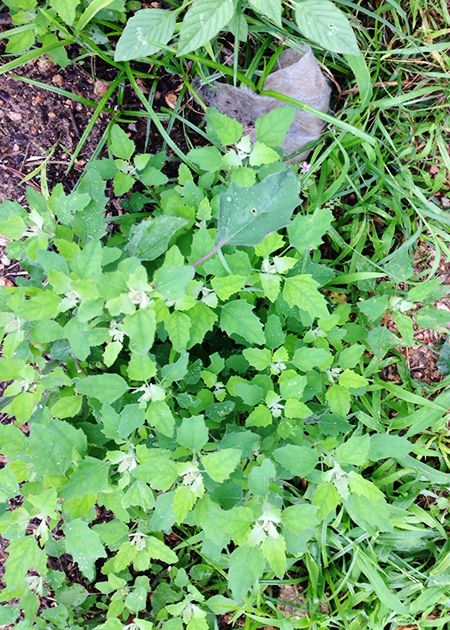All of the rain this early summer season has provided a perfect environment for garden weeds to grow out of control. But before you clear cut your vegetable garden of any intruders, be sure you’re not uprooting lambsquarters – a seemingly weedy plant that is actually packed full of nutrients and quite edible.
A relative of the health-craze grain quinoa, lambsquarters (Chenopodium album) is often forgotten about because it pops up on its own and lambsquarters seeds are rarely available for purchase. However, this plant is more nutrient-dense than spinach with a large amount of protein, calcium, phosphorus, iron, vitamin C, and vitamin A from the soil and its impressive taproot sucking out even more soil minerals. The plant was once revered as food for humans and fodder for animals in America, but is now limited to widespread consumption in Northern India and other small pockets of Asia. It is extremely fast-growing and can take over a plot of land quickly, which is why it has been regarded as a weed, especially by conventional farmers who can suffer huge losses in corn, soybean, sugar beet, or potato fields that are overcome by the plant.
How to Plant Lambsquarters
- Like we’ve hinted at, lambsquarters will grow all by itself! You don’t have to purchase seeds, plant them, or coddle seedlings to get a healthy crop. Not all reproduction is this easygoing!
- Plants grow upright at first, but once they start to seed, they will fall over with all of the extra weight. If you are worried about lambsquarters taking over your garden, be sure to harvest the leaves before the plant goes to seed.
- Warnings suggest avoiding lambsquarters if it grows in artificially fertilized or treated soils, because it absorbs pesticides and “is prone to accumulate high levels of nitrates.”
- Lambsquarters attracts leaf miners, making it a useful trap crop as a companion plant. Grown near other plants, it attracts leaf miners which might otherwise have attacked the crop to be protected.
Culinary Uses
- The leaves and young shoots may be eaten as a leaf vegetable, either steamed in its entirety, or cooked like spinach, but should be eaten in moderation due to high levels of oxalic acid.
- In India, the plant is popularly called bathua and found abundantly in the winter season. The leaves and young shoots of this plant are used in dishes such as soups, curries, and paratha-stuffed breads, especially popular in Punjab.
- Steamed lambsquarters makes a delicious addition to basmati rice, bean salads, colorful vegetables such as carrots or sliced tomatoes, and side dishes of yogurt.

